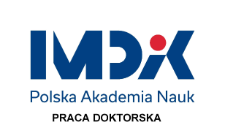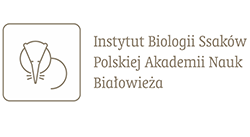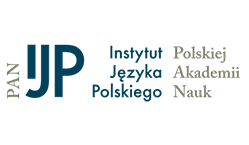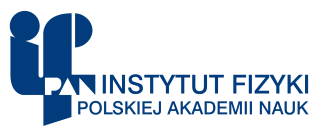- Wyszukaj w całym Repozytorium
- Piśmiennictwo i mapy
- Archeologia
- Baza Młynów
- Nauki przyrodnicze
Wyszukiwanie zaawansowane
Wyszukiwanie zaawansowane
Wyszukiwanie zaawansowane
Wyszukiwanie zaawansowane
Wyszukiwanie zaawansowane

Obiekt
Tytuł: Rola mitofuzyny2 w uszkodzeniu i regeneracji komórek w modelach ischemii i reperfuzji mózgu
Współtwórca:
Zabłocka, Barbara (Promotor) ; Kawalec, Maria (Promotor pomocniczy)
Wydawca:
Instytut Medycyny Doswiadczalnej i Klinicznej im. Miroslawa Mossakowskiego PAN
Miejsce wydania:
Opis:
Na dysertacje składają się 2 oryginalne prace, 98 s.: il., wykr., fotogr.; 30 cm ; Bibliografia zawiera 110 pozycji
Uzyskany tytuł:
Stopień studiów:
Dyscyplina :
Abstrakt:
Proper mitochondrial functioning is crucial for the neuron and, under conditions of ischemia and reperfusion (I/R) can determine its survival or death. The activity of mitochondria depends on many processes, among which the phenomena of fusion and fission of mitochondria and elimination of damaged organelles by autophagy play a crucial role. These processes might prevent the accumulation of damaged mitochondria and support the maintenance of proper mitochondrial morphology and function. On the other hand, the loss of mitochondria can be supplemented by mitochondrial biogenesis. However, the precise role of these processes in the survival of the neuron after I/R and the relationships between them are not fully understood. It has been hypothesized that mitofusin 2 (Mfn2), a protein involved in mitochondrial fusion, might integrate mitochondrial network remodeling with mitophagy and mitochondrial biogenesis in post-ischemic neurons. Therefore, the main aim of this study was to investigate the role of Mfn2 in the neuronal response to ischemia-reperfusion injury, with particular focus on the mitochondrial network dynamics, mitochondrial content and quality.Two experimental models were used. An in vivo studies were performed in the model of transient cerebral ischemia followed by reperfusion (I/R) in mongolian gerbils. Two areas of the hippocampus: ischemia-vulnerable (CA1) and ischemia-resistant (CA2-3, DG) were analyzed. Secondly, a primary culture of rat cortical neurons, wild type and Mfn2-knock down, were subjected to transient oxygen and glucose deprivation.It was shown that in the CA2-3, DG neurons and wild-type neurons in vitro, post-ischemic damage of the mitochondria is initially repaired by the enhanced dynamics of the mitochondrial network. An increase in mitochondrial fusion and in mitochondrial elimination at later stage of reoxygenation have been observed. Furthermore, the activation of the mitochondrial biogenesis and subsequent increase in the amount of respiratory complexes proteins has been shown. Meanwhile, the content of Mfn2 increased significantly.On the other hand, the reduction of the Mfn2 protein level, as observed in CA1 after I/R and induced in Mfn2-knock down neurons, promotes a significant fragmentation of mitochondria. In CA1 neurons after I/R episode and in Mfn2-knock down neurons after OGD mitochondrial damage was significantly enhanced. An increased mitochondrial fusion was not observed. In parallel, an increased macroautophagy has been demonstrated shortly after the insult. In contrast to the hippocampal CA2-3, DG in vivo and wild-type neurons in vitro, activation of mitochondrial biogenesis was not observed. This type of cellular response is not neuroprotective and, as a result, CA1 neurons in vivo undergo delayed degeneration.Thus, presented results suggest that Mfn2 is one of the key proteins conditioning pro-survival response of neurons to transient ischemic injury, enabling their survival, by regulating the relationship between mitochondrial elimination and biogenesis. These phenomena might contribute to the mechanism of the endogenous neuroprotection observed in CA2-3, DG and promote neuronal survival in these areas of the hippocampus
Szczegółowy typ zasobu:
Identyfikator zasobu:
Źródło:
IMDiK PAN, sygn. ZS 425 ; kliknij tutaj, żeby przejść
Język:
Prawa:
Creative Commons Attribution BY 4.0 license
Zasady wykorzystania:
- ; Copyright-protected material. [CC BY 4.0] May be used within the scope specified in Creative Commons Attribution BY 4.0 license, full text available at:
Digitalizacja:
Instytut Medycyny Doświadczalnej i Klinicznej im. M. Mossakowskiego Polskiej Akademii Nauk
Lokalizacja oryginału:
Biblioteka Instytutu Medycyny Doświadczalnej i Klinicznej im. M. Mossakowskiego PAN
Dostęp:
Kolekcje, do których przypisany jest obiekt:
- Repozytorium Cyfrowe Instytutów Naukowych > Kolekcje Partnerów > Instytut Medycyny Doświadczalnej i Klinicznej PAN > Prace dyplomowe
- Repozytorium Cyfrowe Instytutów Naukowych > Kolekcje Partnerów > Instytut Medycyny Doświadczalnej i Klinicznej PAN > Prace dyplomowe > Prace doktorskie
Data ostatniej modyfikacji:
30 paź 2024
Data dodania obiektu:
3 lip 2023
Liczba pobrań / odtworzeń:
71
Wszystkie dostępne wersje tego obiektu:
https://rcin.org.pl./publication/275295
Wyświetl opis w formacie RDF:
Wyświetl opis w formacie RDFa:
Wyświetl opis w formacie OAI-PMH:
| Nazwa wydania | Data |
|---|---|
| Wojtyniak, Piotr, 2023, Rola mitofuzyny2 w uszkodzeniu i regeneracji komórek w modelach ischemii i reperfuzji mózgu | 30 paź 2024 |
Obiekty Podobne
Mossakowski, Mirosław Jan (1929–2001) Kwiatkowska-Patzer, Barbara
Zabłocka, Barbara
Chalimoniuk, Małgorzata
Nałęcz, Małgorzata
Kowalczyk, Joanna Ewa
Pawlak, Elżbieta

 INSTYTUT ARCHEOLOGII I ETNOLOGII POLSKIEJ AKADEMII NAUK
INSTYTUT ARCHEOLOGII I ETNOLOGII POLSKIEJ AKADEMII NAUK
 INSTYTUT BADAŃ LITERACKICH POLSKIEJ AKADEMII NAUK
INSTYTUT BADAŃ LITERACKICH POLSKIEJ AKADEMII NAUK
 INSTYTUT BADAWCZY LEŚNICTWA
INSTYTUT BADAWCZY LEŚNICTWA
 INSTYTUT BIOLOGII DOŚWIADCZALNEJ IM. MARCELEGO NENCKIEGO POLSKIEJ AKADEMII NAUK
INSTYTUT BIOLOGII DOŚWIADCZALNEJ IM. MARCELEGO NENCKIEGO POLSKIEJ AKADEMII NAUK
 INSTYTUT BIOLOGII SSAKÓW POLSKIEJ AKADEMII NAUK
INSTYTUT BIOLOGII SSAKÓW POLSKIEJ AKADEMII NAUK
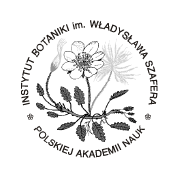 INSTYTUT CHEMII FIZYCZNEJ PAN
INSTYTUT CHEMII FIZYCZNEJ PAN
 INSTYTUT CHEMII ORGANICZNEJ PAN
INSTYTUT CHEMII ORGANICZNEJ PAN
 INSTYTUT FILOZOFII I SOCJOLOGII PAN
INSTYTUT FILOZOFII I SOCJOLOGII PAN
 INSTYTUT GEOGRAFII I PRZESTRZENNEGO ZAGOSPODAROWANIA PAN
INSTYTUT GEOGRAFII I PRZESTRZENNEGO ZAGOSPODAROWANIA PAN
 INSTYTUT HISTORII im. TADEUSZA MANTEUFFLA POLSKIEJ AKADEMII NAUK
INSTYTUT HISTORII im. TADEUSZA MANTEUFFLA POLSKIEJ AKADEMII NAUK
 INSTYTUT JĘZYKA POLSKIEGO POLSKIEJ AKADEMII NAUK
INSTYTUT JĘZYKA POLSKIEGO POLSKIEJ AKADEMII NAUK
 INSTYTUT MATEMATYCZNY PAN
INSTYTUT MATEMATYCZNY PAN
 INSTYTUT MEDYCYNY DOŚWIADCZALNEJ I KLINICZNEJ IM.MIROSŁAWA MOSSAKOWSKIEGO POLSKIEJ AKADEMII NAUK
INSTYTUT MEDYCYNY DOŚWIADCZALNEJ I KLINICZNEJ IM.MIROSŁAWA MOSSAKOWSKIEGO POLSKIEJ AKADEMII NAUK
 INSTYTUT PODSTAWOWYCH PROBLEMÓW TECHNIKI PAN
INSTYTUT PODSTAWOWYCH PROBLEMÓW TECHNIKI PAN
 INSTYTUT SLAWISTYKI PAN
INSTYTUT SLAWISTYKI PAN
 SIEĆ BADAWCZA ŁUKASIEWICZ - INSTYTUT TECHNOLOGII MATERIAŁÓW ELEKTRONICZNYCH
SIEĆ BADAWCZA ŁUKASIEWICZ - INSTYTUT TECHNOLOGII MATERIAŁÓW ELEKTRONICZNYCH
 MUZEUM I INSTYTUT ZOOLOGII POLSKIEJ AKADEMII NAUK
MUZEUM I INSTYTUT ZOOLOGII POLSKIEJ AKADEMII NAUK
 INSTYTUT BADAŃ SYSTEMOWYCH PAN
INSTYTUT BADAŃ SYSTEMOWYCH PAN
 INSTYTUT BOTANIKI IM. WŁADYSŁAWA SZAFERA POLSKIEJ AKADEMII NAUK
INSTYTUT BOTANIKI IM. WŁADYSŁAWA SZAFERA POLSKIEJ AKADEMII NAUK
